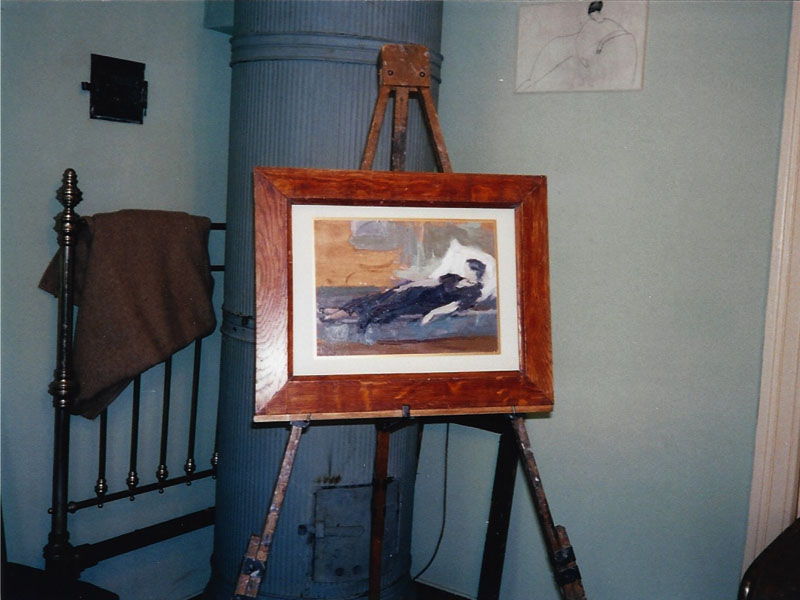MY LITERARY PILGRIMAGE TO RUSSIA
The Alexander Mackenzie Memorial Lecture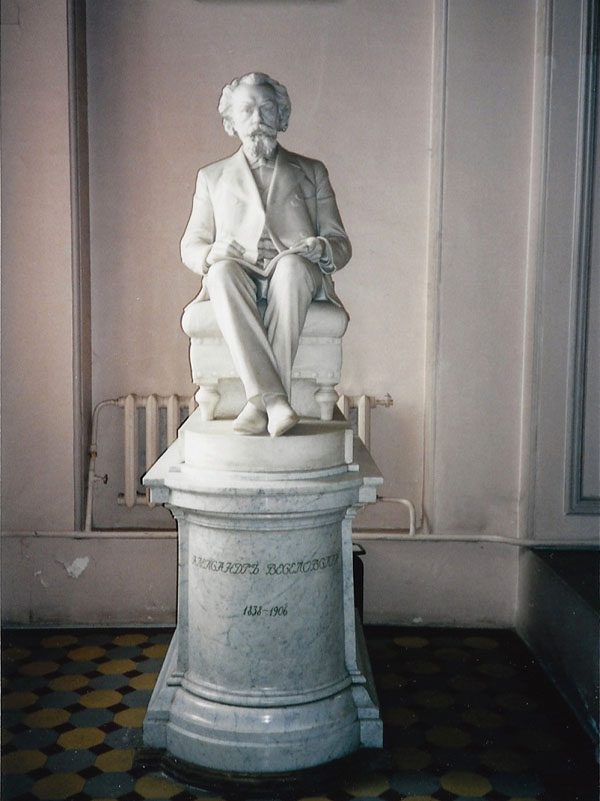
Statue of Pushkin – Pushkin House
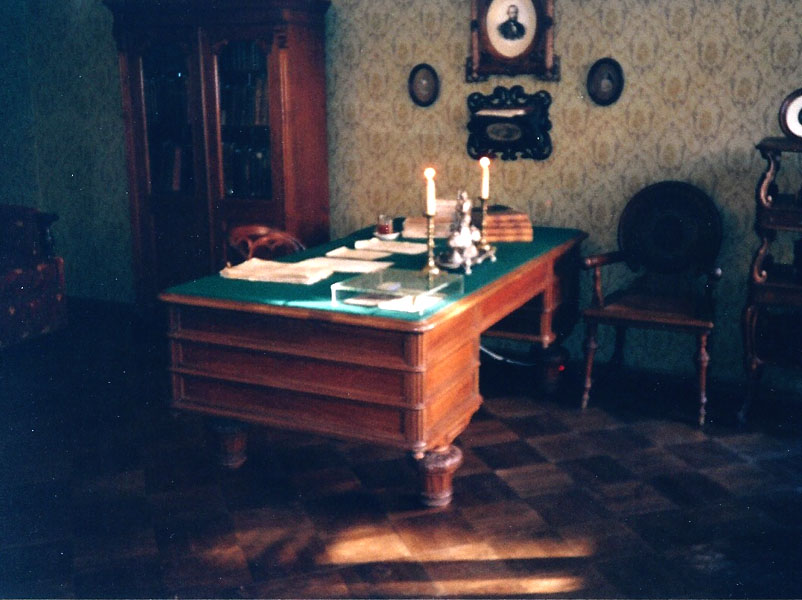
Fyodor Dostoyevsky writing desk – Dostoyevsky Museum, St. Petersburg
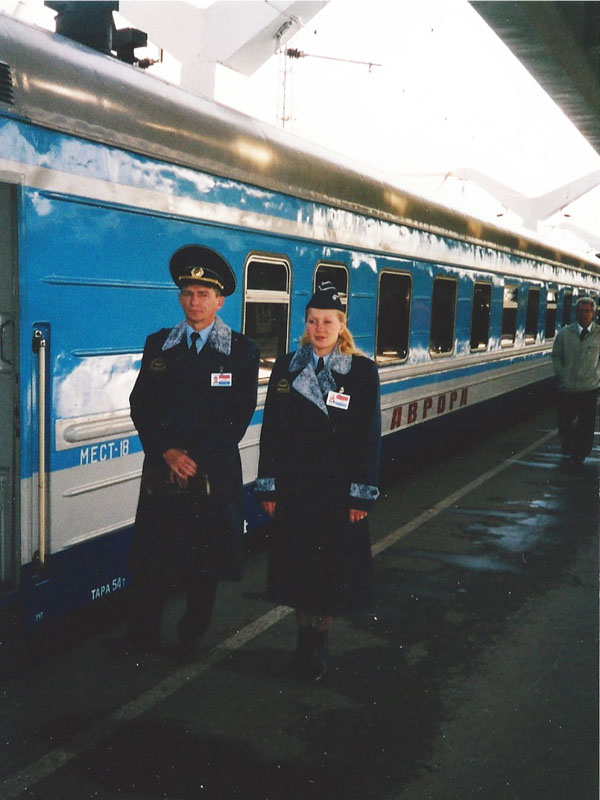
Train from St. Petersburg to Moscow
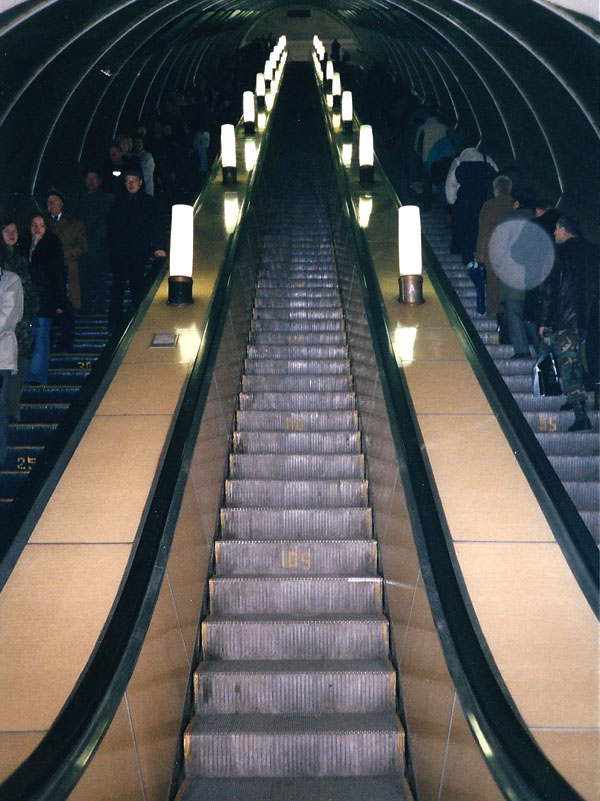
Escalator in the St. Petersburg subway
Right: A portrait of Anna Akhmatova, painted by Modigliani, at the Anna Akhmatova Museum. In the Fountain House, St. Petersburg, where the poet have lived for nearly thirty years.
In October 2004 I was invited by The Canadian Consulate in St. Petersburg, Russia to deliver The Alexander Mackenzie Memorial Lecture. It was an invitation that allowed me to embark on a literary pilgrimage following the life and work of Osip Mandelstam. For five years I had researched Mandelstam’s Russia and the Stalin era through poetry, fiction, and memoirs, eventually working my way towards history books. This was a golden opportunity to meet with Mandelstam scholars and ask them the questions that seemed unanswerable. It was the moment where I could tap into Russia’s oral history, those essential pieces of the puzzle that were never written down for obvious reasons. Finally it was a chance to explore so many of the places I had read about and allow them to sink into my senses, something that is so essential for my writing.
Prior to my trip I received a timely letter from Sophia Bogatyreva. She was only a schoolgirl when her father, Ignatij (Sania) Bershtein (pen name Aleksandr Ivich) and her mother Nuria, took the great risk of housing Mandelstam’s collection of poems in their flat. Had the poems been discovered the consequences would have been beyond dire— arrest for the parents and the child sent to an orphanage. I looked on Sophia’s letter as a good omen prior to setting out on this journey of a lifetime. Her recollections can be found in the riveting piece, “Testament”, Russian Studies in Literature, Fall 1994.
I recall reading an article on how a foreign student had received a tour of Mandelstam’s Moscow with a man named Leonid Vidgoff. The places they had visited were filled with literary significance. Retracing those footsteps would be a dream come true for me. I tried without success to locate Leonid but came up empty handed. A number of months passed and Michael Watchtel, Professor of Slavic Studies and Literature at Princeton University, put me in touch with the Mandlestam Society in Russia. To my great surprise they had made arrangements for Leonid to take me on that very same tour. Leonid created a magical day for me, which went beyond all my expectations, as he made Mandlestam’s Moscow come alive.
On my first night in St. Petersburg I met with the venerable Russian poet Aleksandr Kushner (see Apollo in the Snow, FSG, New York, 1991). Truly a memorable evening.
The Mandelstam scholars I met were able to fill in the gaps in my research. I remember asking Sergei Vasilenko follow up questions before he even finished giving his primary responses. My meeting with Dr. Alexsandre Mets was very special. Dr. Mets is a physician and for the most part stays out of the public eye. One thing I learned was that the fortress walls that divide Arts and Sciences in North America, do not exist in Russia. A number of the Mandelstam scholars are from the science field, and many science faculties have literary clubs.
I remember espousing my theory to Dr. Mets, that even if Mandelstam had not written and recited the poem attacking Stalin, he would have been arrested because it was impossible for him to remain silent to the injustices he was witnessing. One of the examples I gave was Mandelstam’s intervention to save the lives of five bankers he did not even know. Mandelstam reached out to Nikolai Bukharin, a member of the Politburo, who greatly admired his poetry. At a time when people were trying to preserve their own lives and those of their family members, getting involved in other people’s affairs was unheard of. We began discussing some of the finer details of this episode. At one point I asked how he was certain about a critical historical fact that seemed unobtainable. Dr. Mets looked at me calmly and said, “Because I’m the one who discovered the names of those five men”. I put a check mark by the question and eventually broke the silence with another query.
One of the highlights of my trip was the Anna Akhmatova Museum located at The Fountain House, in The Sheremetev Palace. Akhmatova lived in an apartment on the second floor. Anna Akhmatova was one of the leading Russian poets of her day. She was a close friend of Mandelstam’s and happened to be visiting him on the night of May 13, 1934 when he was arrested. She too was persecuted because of her poetry. Her poems were banned, she was forced into poverty and her son was arrested twice, spending a total of fourteen years in prisons or camps. She visited the Mandelstams in Voronezh, during their period of internal exile, in February of 1936.
The Museum was a touchstone for the life of a great poet and someone I admired for her courage. Akhmatova’s “Requiem” was written to all of Stalin’s victims as well as those who survived the atrocities of that era. The poem was too dangerous to be preserved in writing. After Akhmatova had written a portion of it she would call her friend Lydia Chukovskaia to come over and memorize it. They would make small talk about the weather and other trivialities as the apartment was bugged. After Lydia completed her task the poem was burned.
The Museum library was filled with rare videos and reference materials that I spent hours delving into. I returned to the Akhmatova Museum on at least two additional occasions.
Through the Consulate I was granted entrance into Pushkin House the national literary archives. There is a room devoted to every renowned Russian writer. I remember walking into one room with the guide and translator and coming face to face with a life size figure of Tolstoy. Later a curator wearing white gloves showed me original writing from many famous Russian poets and authors including Pushkin.
Mikhail Bulgakov has long been one of my favorite authors and playwrights. The Master and Margreta is a novel that I cherish. I was fortunate to receive a tour of Bulgakov’s Moscow and to see where his life intersects with this famous novel. Bulgakov like Mandlestam, Akhmatova and so many others, was persecuted for his writing. None of his work was published after 1927, and for many years he was prevented from working in his field. Bulgakov finished The Master and Margreta in 1939 and died in 1940. It first appeared in two installments in the magazine Moskva. The books first printing was in 1973.
Other museums devoted to individual writers I visited included: The Pushkin Literary Museum, Moscow; The Dostoevsky House Museum, St. Petersburg; and The State Museum of Vladimir Mayakovsky, Moscow.
